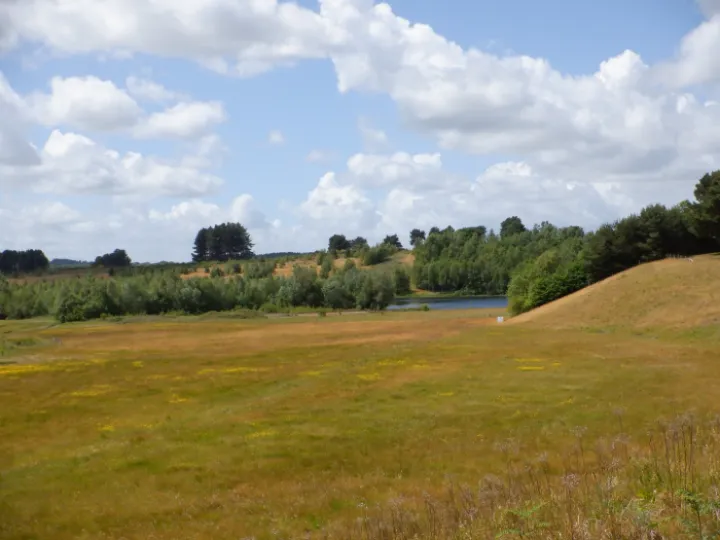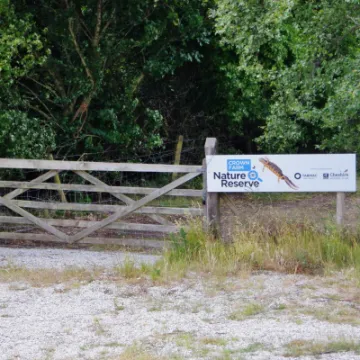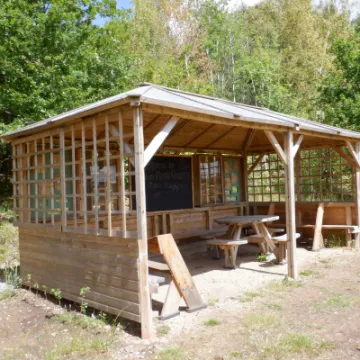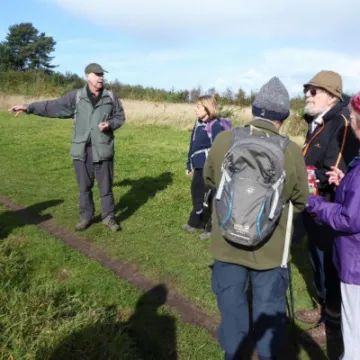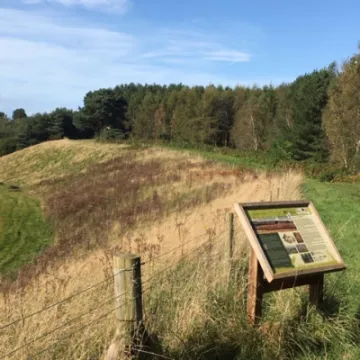Rewilding at Local Level
'Rewilding', and whether swathes of countryside are returned to their natural state, is a question uppermost in the minds of many local communities. Nature is quick to reassert itself once we stop pruning and manicuring, thereby creating a more biodiverse environment, perfect for wildlife and pollinators in particular! Many of you may have tuned into Desert Island Discs when 'Isabella Tree' was the morning guest. Isabella, a conservationist and award-winning author of 'Wilding: the Return of Nature to a British Farm', recalled the pioneering story of rewilding a 3,500 acre farm estate in West Sussex. This morning, we bring you a story of 'rewilding' at local level right here on The Sandstone Ridge i.e. the 'Rewilding of a Sand Quarry', kindly provided by Peter Snape.
'... One of the striking views from the Sandstone Ridge at Eddisbury is the sight of the sand quarries near Delamere.
One of them at Crown Farm has recently reached the end of its life and by law the extractors have to
return the site to its natural wild state, a process called rewilding.
In order to help with this, the operator Tarmac has asked for the help of the Cheshire Wildlife Trust
who can supply help advice and manpower to make the conversion.
The Oakmere Way near Cuddington runs past the site and the benefits can already be seen.
The sand embankments have been stabilised with grass and tree planting and the area has been fenced off and secured, together with Wildlife Trust signage.
These areas are great for pollinators such as solitary bees and grassland butterflies like the small
copper, small heath and common blue.
Sandmartins like to make their nests in the surrounding slopes.
Within the site are two beautiful lakes which will be key features of the restored site. They attract all
sorts of birds including migrating species such as geese, seabirds and local waterbirds such as Great
Crested Grebe. Other pond life such as beetles and dragonflies are also making the lakes their
homes.
The Wildlife Trust has ambitions to use the site as a centre for local schoolchildren to learn about
nature. To this end they have constructed a wooden outdoor classroom on the site.
There are workbenches and display boards inside and bird-feeders and nest boxes attached to the
outside.
Access is currently restricted due to the main entrance still being used as the main entrance to the
remaining working quarry . Strict health and safety rules apply to visitors and the site is not open to
the general public.
COVID 19 has stopped all active restoration work by volunteers but it is hoped that this will continue again shortly. Plans include more planting of natural features and wildflower meadows. It is also hoped to build a small jetty on the lake to allow supervised pond-dipping by schoolchildren who can then examine their finds in the outdoor classroom.
The recently completed Oakmere Way between Cuddington and Delamere was part of the Walk and Ride Festival programme last year and it was possible to view the site from the fence along the footpath where
there is also an information board ...'.
Cheshire Wildlife Trust is a partner of The Sandstone Ridge Trust Partnership
Click on each image to enlarge.
Peter Snape – June 2020

Sandstone Ridge Trust
Registered Company No. 7673603
Registered Charity No. 1144470
info@sandstoneridge.org.uk

